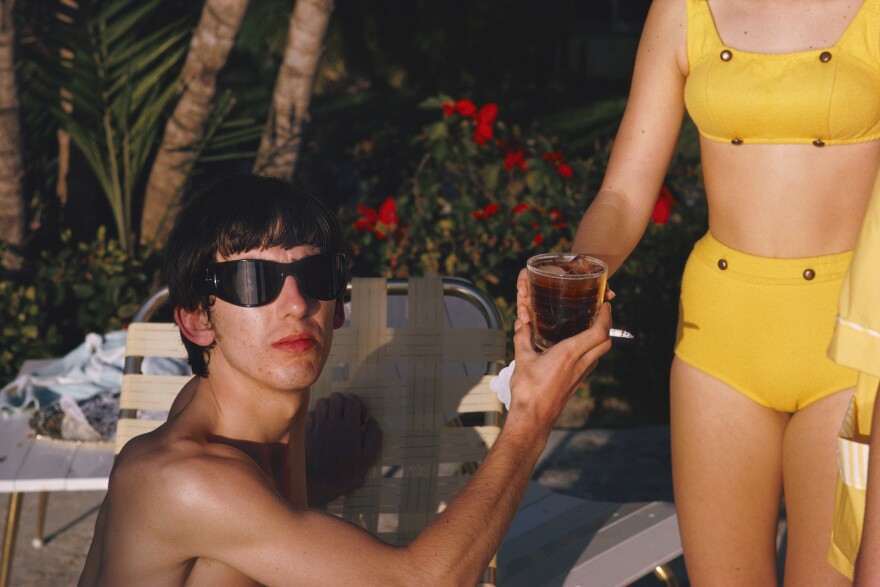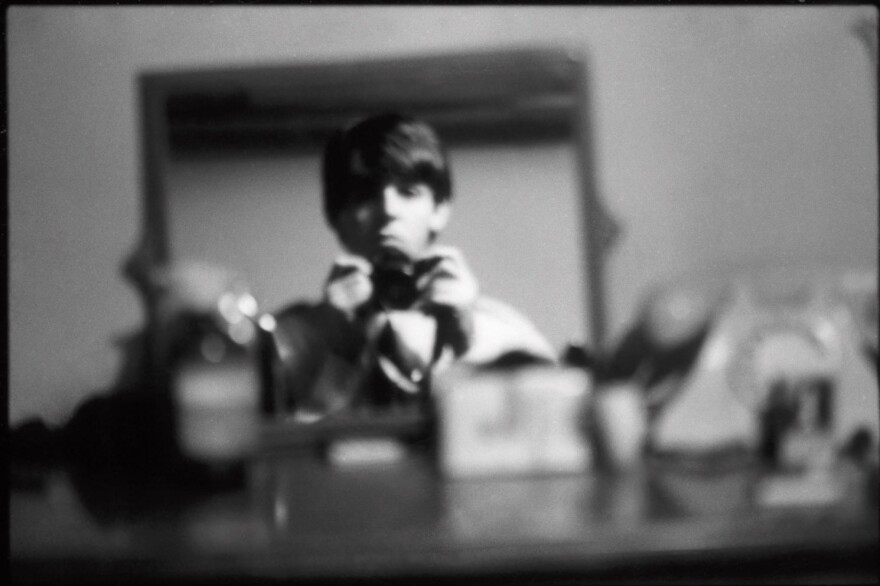Updated June 13, 2023 at 10:38 AM ET
This famous moment in music history is now visible from a different angle.
Any capsule history of rock music, or pop music, or the 1960's will include the Beatles' arrival in the United States in early 1964. The images are all familiar — young men with bowl haircuts (that they'd later grow out) and businesslike suits (which they'd later trade for more exotic sixties fashions) and their catchy hit songs (which they'd later make weirder and more psychedelic). Also familiar: the screaming fans, who would remain about the same for decades.
What's different about the photos in Paul McCartney's book 1964: Eyes of the Storm is the point of view of the photographer: McCartney himself.

One of the most striking images shows a crowd, mostly women, behind police barricades at New York City's Plaza Hotel. They are screaming directly at McCartney even as he snaps their picture in black and white.
In another image, McCartney photographs two men as they point cameras at him.

McCartney says an archivist brought the photos out of his archives. He hadn't seen them in decades. "Most of them I don't remember taking because it was a whirlwind," he said.
Some of the images capture his fellow band members at rest in hotel rooms. Others show America as it was in 1964 — in particular, New York, Washington D.C. and Miami, the three U.S. cities the Beatles toured. (The book also shows prior stops in Liverpool, London and Paris.) One photo shows a railroad worker watching their train pass; others are portraits of police officers who watched over them.

"I'm very proud of being part of the working class, which I think you guys would call blue collar," McCartney said, referring to his youth in Liverpool, England. "If you're looking for photos, they're often the great faces. The faces where there's a story behind them."

The photos, which now hang in a London art gallery, document a moment when McCartney, not quite 22, was experiencing an almost unprecedented level of fame.
He recalls it as "a very special time" in America. It was a few months after the assassination of President John F. Kennedy, and a few months before Congress passed the Civil Rights Act of 1964. "The attitudes that had gone before us were being changed."
The Beatles changed with the times: their once-cheerful hits evolved rapidly through the 1960's, at times growing dark, weird, or druggy. Yet their music retains a timeless quality. Though the band had broken up by 1970, much of their catalog remains familiar.
McCartney's photographic return to an early moment in his journey prompted a question: Is there anything he wishes he could go back and tell his younger self?

Get to know the people you work with, he answers. "I think I might have said to my younger self: Look, you know, not only take this moment, but really nurture these relationships." He said that today he talks regularly with Ringo Starr, the only surviving Beatle besides McCartney.
McCartney then interrupted his own insight. "Oh, wait a minute," he said. In fact he was close to his bandmates in the early days, "so I'm probably just making it up."
The audio version of this interview was edited by Reena Advani and produced by Barry Gordemer. Majd Al-Waheidi edited it for digital. contributed to this story
Copyright 2023 NPR. To see more, visit https://www.npr.org.








